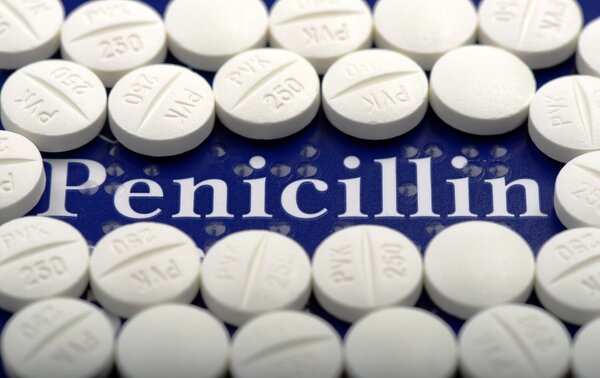When it comes to antibiotics, penicillin is one of the most well-known names. It's commonly used to treat bacterial infections in both humans and animals. But have you ever wondered, “Is animal penicillin the same as human penicillin?” Let’s explore this question and clarify the differences between these two types of penicillin, especially in light of new regulations affecting antibiotic use in livestock.

Penicillin is a type of antibiotic discovered in 1928 by Alexander Fleming. It effectively treats various bacterial infections by inhibiting the growth of bacteria. There are different formulations of penicillin for both humans and animals, and these formulations can differ significantly.
While both human and animal penicillin serve the same primary function—fighting bacterial infections—they are not always identical. Here’s a closer look at the differences:
Human Penicillin: Specifically formulated for people, human penicillin is available in various forms, such as tablets, capsules, and injections. Dosages are tailored to human physiology based on age, weight, and the type of infection being treated.
Animal Penicillin: Formulated for veterinary use, animal penicillin comes in forms like injections or powders mixed with feed. The dosages are designed for specific animal species, taking into account their size and metabolism.
Human Use: Human medications, including penicillin, must meet strict regulatory standards set by agencies like the Food and Drug Administration (FDA). These standards ensure that medications are safe, effective, and properly labeled.
Animal Use: Recently, new regulations have been introduced that impact how antibiotics can be obtained for livestock. According to recent guidelines, veterinarians must now prescribe antibiotics for livestock use, limiting over-the-counter access. This shift aims to promote responsible antibiotic use in agriculture and reduce the risk of antibiotic resistance.
Side Effects: Both human and animal penicillin can cause side effects. Common side effects in humans include:
In animals, side effects can include allergic reactions, gastrointestinal upset, and potential toxicity depending on the species and dosage.
Allergic reactions: Ranging from mild rashes to severe anaphylaxis.
Gastrointestinal issues: Such as nausea, vomiting, and diarrhea.
Fungal infections: Prolonged use can disrupt normal flora, leading to yeast infections.
Antibiotic Resistance: Overuse of penicillin in both humans and animals can lead to antibiotic resistance. The new regulations for livestock aim to curb this issue by ensuring that antibiotics are only used when necessary and under veterinary guidance.

Penicillin is effective against a variety of bacterial infections, including:
Human Use:
Pneumonia
Strep throat
Skin infections
Meningitis
Syphilis
Animal Use:
Respiratory infections in livestock
Mastitis in dairy cows
Various infections in pets and companion animals
Using animal penicillin for humans is not recommended for several reasons:
Dosage Differences: The dosages in animal penicillin may not be suitable for humans, leading to under-treatment or overdose.
Different Formulations: Animal medications might contain additives that are not safe for human consumption.
Regulatory Issues: Human medications undergo rigorous testing, while animal medications may not face the same level of scrutiny.
In conclusion, while animal penicillin and human penicillin share the same active ingredient and purpose of treating bacterial infections, they are not the same. They differ in formulations, dosages, and regulatory standards. The recent regulatory changes in livestock antibiotic use are crucial for promoting responsible practices and addressing antibiotic resistance.
Always consult a healthcare professional or veterinarian before using any medication, and never substitute animal medications for human ones. Understanding these differences can help you make informed decisions about antibiotic use, whether for yourself or your pets.
animal tags: Penicillin
We created this article in conjunction with AI technology, then made sure it was fact-checked and edited by a Animals Top editor.